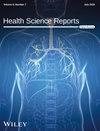Lip, Oral Cavity, and Pharyngeal Cancers: Global Epidemiology, Risk Factors, and Prevention: A Narrative Review
Abstract
Background and Aims
Lip, oral cavity, and pharyngeal cancers (LOPC) are malignancies arising in the lip, oral cavity, and pharyngeal tissues, often asymptomatic in early stages. We aimed to perform a narrative review of the literature on the global LOPC epidemiology, economic burden, risk factors, as well as preventive strategies.
Methods
A comprehensive search was conducted in PubMed and Google Scholar up to June 2024, using keywords related to lip, oral, and pharyngeal cancers.
Results
There are several risk factors for these cancers, including tobacco smoking, alcohol consumption, low socioeconomic status, dietary factors (high meat and low fruits or vegetables consumption), genetics, radiation exposure, demographic factors, poor oropharyngeal health, human papillomavirus (HPV) infection, occupational exposures, and other factors, such as family history of cancer. Preventive strategies such as increasing public awareness, promoting routine dental check-ups, and expanding HPV vaccination coverage can play a role in reducing the burden of these cancers.
Conclusion
LOPC remain a significant global health issue due to high incidence and mortality rates and various modifiable risk factors. Effective strategies targeting these factors, along with continued research on prevention and innovative treatments, are essential to reduce this burden and improve public health outcomes.


 求助内容:
求助内容: 应助结果提醒方式:
应助结果提醒方式:


